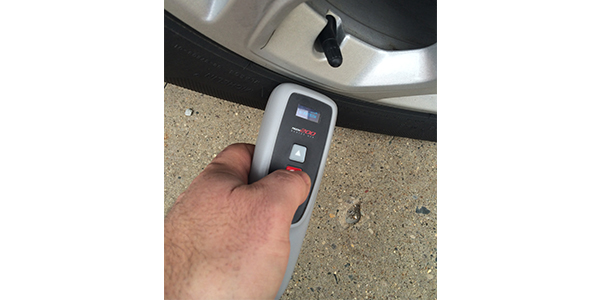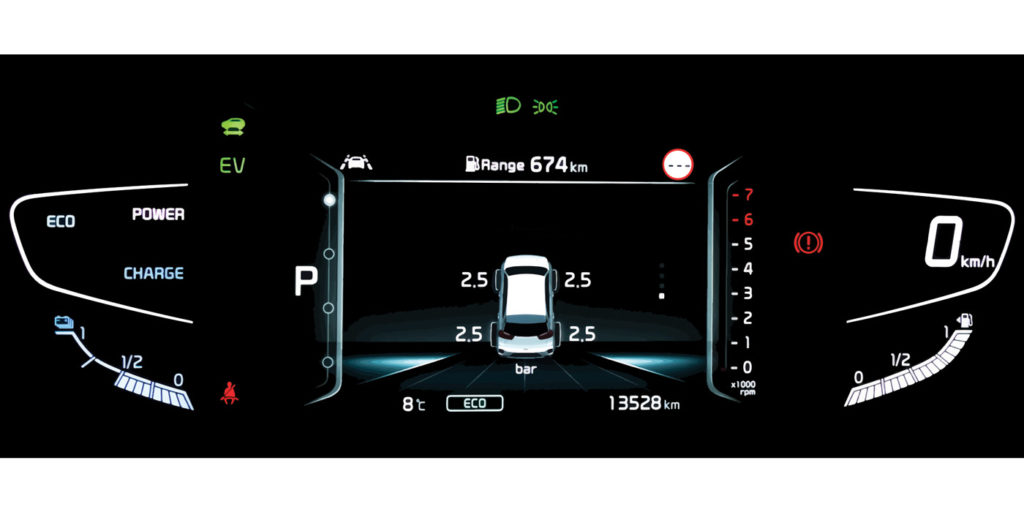It is safe to assume that by the time your customer gets to your shop with a TPMS light on, they are already frustrated and stressed – frustrated that there is a warning light on their dashboard that they don’t recognize and stressed that they don’t know what it will cost or how long it will take to fix it.
From the very first step into your shop, your team has a lot of damage control to do. Here are three small things your team can implement today to ensure a positive TPMS service experience that will equate to more TPMS sales.
Be Positive About TPMS
Like most maintenance requirements, TPMS can be seen as an annoyance to the driver, especially if they don’t understand what the warning light means or why they should invest a few hundred dollars to keep it functioning. If that isn’t stressful enough, rather than getting home for dinner or getting to work on time, they are at a shop getting their car serviced and listening to explanations they don’t understand. Here lies your opportunity to turn the situation around!
If their TPMS questions are answered in an equally negative tone, it only fuels the fire for refusal. When your customer asks what the benefits are to keeping the system functioning, don’t respond with “to turn the light out.” Instead, respond with a list of positive benefits. If they understand the importance of their TPMS system and how it benefits their safety, fuel economy, emissions, vehicle handling, etc., the driver will be much more willing to invest in your TPMS service.
Your customer should leave feeling confident that they made the choice to keep their TPMS working. Not just because it turned the warning light off on their dashboard, but because they appreciate that they can drive down the expressway knowing that their tires are properly inflated, ensuring the safety of them and their passengers. The next time they see that light, they will come back to you.
Educate your Customer
Don’t be a salesman; be an educator. People buy from who they like and who they trust. TPMS can sell itself if your customer understands the impact it can have on optimizing their vehicle. There are many ways that simple education can significantly increase your profits.
For example, if your shop practices “test before touch” and you find that one of the OE sensor batteries is dead, it will only be a matter of time before the other three or four sensors will follow. Rather than selling the sensor, turning the warning light off and walking away, let your customer know the probability of them having to bring the vehicle back in later to service the other sensors. Doing it all together in one service will save them time and money while ensuring your shop receives the sale of those additional sensors. Everybody wins.
Service packs are another great example of a win-win when it comes to making profit and optimizing your customer’s experience. Any time a tire is removed from the wheel, the service kit should be changed. Service kits are a quick, low-cost way for you to ensure your customer does not drive away with slow air leaks that weren’t there before. Simply explaining this to your customer can be the difference between additional sales with exceptional service or lower sales with mediocre service.
Communicate Everywhere
At the counter, in the lobby, in the bathrooms, by the coffee machine – there is always opportunity for better communication when it comes to TPMS. You never know where that information is going to hit someone at exactly the right moment.
Here are a few ideas to better engage with customers:
- Keep a small container of corroded or broken valves at the counter to show the customer what corroded sensors look like when questions are raised.
- Keep a small rim cutout with a sensor inserted on the counter to help explain what the sensor looks like on the other end of the stem.
- In the lobby, keep TPMS related driver education materials close to the seating area.
- Have interesting “Did You Know” facts about TPMS displayed throughout the lobby.
- Use signs to help make sure they know your shop services TPMS.
- Show the TPMS warning light throughout your shop, so customers can recognize the light they are seeing on their dashboard.
Before you know it, your customers will be selling TPMS to themselves!
When it comes to selling more TPMS, no stone should go unturned. Try these simple steps and see what works for your customers. No matter how much TPMS you sell, it should always come back down to the safety and satisfaction of your customer. Always use OE-quality parts from a reputable OE supplier, always change the service pack and always practice test before you touch. High-quality service brings in high-quality customers.
Jacki Lutz is head of global marketing and communications for Schrader Performance Sensors, the automotive aftermarket brand of Sensata Technologies. In addition to being a Certified TIA ATS Instructor, she is also vice president of the Automotive Communications Council and an active Member of the AASA Market Executive Council.














